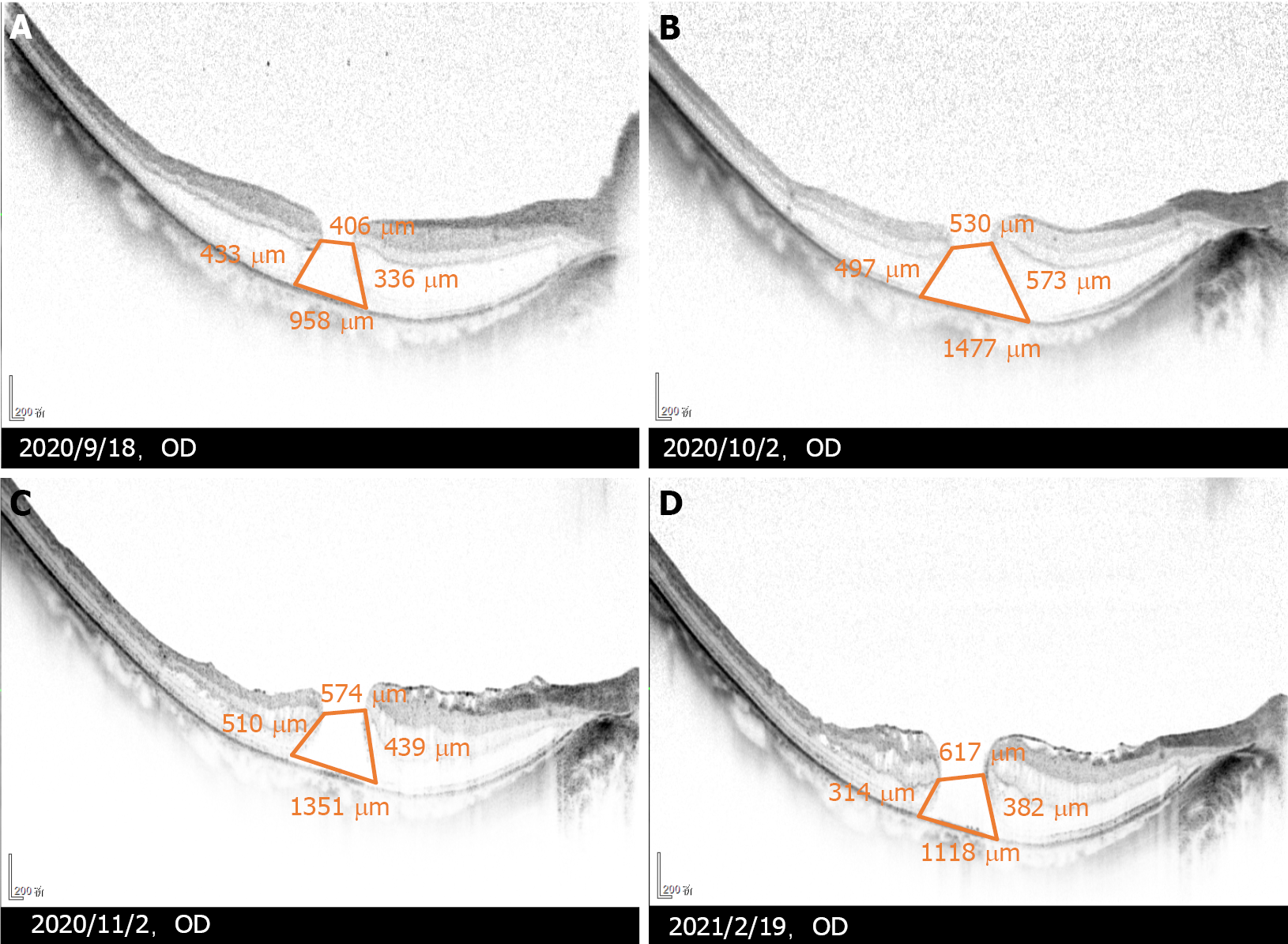Copyright
©The Author(s) 2022.
World J Clin Cases. Jan 14, 2022; 10(2): 671-676
Published online Jan 14, 2022. doi: 10.12998/wjcc.v10.i2.671
Published online Jan 14, 2022. doi: 10.12998/wjcc.v10.i2.671
Figure 1 Preoperative manifestation of the eye.
A: Preoperative optical coherence tomography: Vitreomacular traction was observed in the right eye; the retinal nerve fibre layer was split on the temporal side, and the outer nuclear layer was split extensively on the entire macula; B: Preoperative optomap: Tessellated fundus only was observed.
Figure 2 Changes of optical coherence tomography in the macular hole after initial vitrectomy.
A: One week postoperative; B: Three weeks postoperative; C: Two months postoperative; D: Five months postoperative. Five months after the initial vitrectomy, split range of the outer nuclear layer gradually reduced, a new split of the inner nuclear layer appeared, and the macular hole gradually expanded. The epiretinal membrane proliferated on the residual internal limiting membrane, wrinkled and caused the disordered shape of the nasal retinal nerve fibre layer.
Figure 3 Manifestation of the eye 3 wk after the second vitrectomy.
A: Three weeks after the second vitrectomy, optical coherence tomography showed that the macular hole was closed, covered by flocculent internal limiting membrane. The split of each layer was significantly reduced, and photoreceptor cells were absent in the macular area; B: Optomap: Tessellated fundus only was observed.
- Citation: Ying HF, Wu SQ, Hu WP, Ni LY, Zhang ZL, Xu YG. Vitrectomy with residual internal limiting membrane covering and autologous blood for a secondary macular hole: A case report. World J Clin Cases 2022; 10(2): 671-676
- URL: https://www.wjgnet.com/2307-8960/full/v10/i2/671.htm
- DOI: https://dx.doi.org/10.12998/wjcc.v10.i2.671











